Reviews
Todd Haynes
USA, 1995
Credits
Review by Matthew Derby
Posted on 01 October 2013
Source Sony Pictures DVD
Categories 31 Days of Horror X
Carol White and her husband emerge from their car after a night out. She pauses briefly in the two-car garage of the massive, severely appointed home they share, and sneezes into her hand. “Bless you,” the husband says, opening the door, and they enter the house, neither of them aware that this is the first salvo in a battle Carol will wage with her own body through the course of Todd Haynes’s Safe—a battle with a mysterious illness that cannot be identified or treated with conventional medicine, and which will eventually turn her life inside out.
In a 1995 BOMB interview with Alison Maclean, Haynes said that, with Safe, he wanted to make a “completely latent horror film where everyday life is the most frightening of all.” The key word here is latent, because not only is the illness that consumes Carol never seen or even named, but the film seems alarmingly disinterested in leading us toward an identification of the monster at the end of the hallway, as one of the characters describes Carol’s condition. It turns out that this is an incredibly effective method for creating a horror film about the world around us. Its rigorous refusal to provide an authoritative truth, even in its final moments, takes advantage of our deep and persistent fear of the unknowable. Safe is The Exorcist without the exorcism, or Rosemary’s Baby without the devil, or a version of Contagion with all of the scientific background knocked out. If you can imagine how much more unsettling those films would be if the conditions they depict were never given a rational explanation, you begin to understand how Safe is a film designed to make you feel anything but safe.
Right from the start, we sense that something is not right about Carol’s world. She lives in a planned community that is still under construction, and the vacant, skeletal buildings that break up the landscape give off the vibe of a ghost town. The first time we see Carol in the daylight, she is kneeling to trim some yellow roses in the impeccably kept garden surrounding her house, which is one of a handful of finished structures in the development. The camera focuses in on the roses and of Carol’s hands as she gently prunes them—a wholesome image composed with the vivid, buttery color palette of a Douglas Sirk picture, except for the fact that Carol is wearing yellow latex gloves, the kind used for scrubbing bathroom tile.
We soon find out that Carol doesn’t sweat, that she stares into space, expressionless, while her husband has sex with her, and that she is a self-professed “milkaholic.” And then she has a coughing fit while following a semi on the highway, which forces her to pull frantically into a parking garage and retch. At the hairdresser, she decides on a whim to get a perm, and suffers a serious nosebleed. She enters a drycleaning establishment while two men in masks are spraying the place with some sort of cleanser and collapses, ending up in the hospital with unexplainable bleeding from the mouth. The most disturbing incident occurs at a baby shower for one of Carol’s friends. She invites a young girl to sit on her lap during the opening of gifts, but almost immediately begins wheezing. The child’s face sours as Carol gasps for air. She calls for her mother, which draws the attention of the adults in the room. They rush around Carol and attempt to comfort her, but their awkward overtures betray their fear and disgust at Carol’s condition. Carol’s doctor is similarly nonplussed at the frequency with which she returns to his office complaining of symptoms he can’t detect pertaining to an illness he can’t diagnose. He recommends a psychiatrist who is similarly ineffective. Carol’s husband accompanies her throughout this process, and he is supportive but thoroughly skeptical throughout.
And we find, at this point in the film, that we, too, are skeptical. It’s possible that Carol is suffering from some kind of environmental illness, but it seems just as likely that she’s manufacturing the whole thing as a way to cope with the dull and barren life she leads as a San Fernando Valley homemaker. We are frustrated that we don’t have answers, and we are tempted to blame Carol for our own uncertainty. We see the gloved hands of a hairdresser pumping a clear gel on Carol’s hair, and then we see blood well up in her nostril and streak down the side of her face. Are those two facts connected literally, or are we meant to view them as coincidental events that Carol has chosen to connect because they complete the circuit of a disease she only thinks she has? Haynes is rigorous in his refusal to provide any clues here. Again, in the BOMB interview, he says, “I didn’t want… to allow the film to overpower [Carol] with its narrative instructions. This character has her own uncertainty about who she is, and the vastly changing face of her world becomes our guide to her.” This clinical distance has a profoundly destabilizing effect on us. If we know that Carol’s condition is, for a fact, caused by a reaction to the fumes, polymers, and resins that surround her, we can feel a simple (and reductive) pity for her, and see her struggle as a valiant attempt to redefine her life in the face of a debilitating illness. If, on the other hand, we’re certain that Carol’s symptoms arise from mental illness, we might instead view her condition as the punishment for her vapid lifestyle, and categorize Safe as nothing more than a scathing critique of consumer culture and affluence in Reagan-era America. Either way, we would come away from Safe feeling a sense of closure. We could bear witness to someone else’s extravagant pain and suffering, and in witnessing experience a sort of cathartic - if temporary - release from our own fear and anxiety, Safe could easily have made us feel, well, safe, as its credits rolled. But because we are never any more certain about Carol’s illness than any of the characters in the film, we are not empowered to feel genuine pity or scorn for Carol. We may feel these emotions in fits and spurts throughout the film, but we cannot ever feel confident about our judgment of Carol’s suffering, and because we have no facts, we create our own fragile rational architecture around the film’s plot. Which is precisely what Carol must do with the cards her life has dealt her. Safe is not, ultimately, a film about disease. It is a film about the vast, invisible systems that course through our lives, shaping us in ways we cannot understand. They operate at such a great distance from us that we can’t possibly identify them no matter how hard we try. Like Carol, we have only the evidence the world gives us to orient ourselves and form an identity. And whether chemical fumes actually make us retch or whether we forge an imaginary connection between the two is ultimately moot.
The final third of Safe takes place on a desert retreat called Wrenwood, a facility led by a charismatic, “chemically sensitive” man with AIDS named Peter Dunning, who founded the facility on the principle that disease arises from a core emotional deficiency, and that only through rigorous self reflection can we really be cured of anything. Wrenwood has the trappings of a cult, complete with a creed invoked often at group meetings (“We are one with the power that created us / we are safe / and all is well in our world”), but Haynes resists the urge to broadly parody their mission. Dunning is genuinely passionate and persuasive when we first meet him, and at his smarmiest he gives off just the faintest air of pretense. And the program director, a kindhearted woman named Claire who glides through the camp trailing long New Age skirts and shawls, is the only person in the film who’s able to physically touch Carol without making her vomit. At a pivotal point in the film, Claire provides the only genuine comfort to Carol when she describes how looking at herself in the mirror every day and repeating the phrase, “I love you,” allowed her to walk again after a chemical overload had left her paralyzed. “For me,” Claire says, “[being paralyzed] was a gift, because everything got taken away from me—everything in the material world. And what was left, was me.”
After this exchange, Carol begins to align herself with the staff and patients at Wrenwood. She becomes more like them than like her husband and stepson, who lope uncomfortably through the Wrenwood campus on a visit as she lectures them about the healing process. She seems, at last, to belong somewhere, which is distressing because her body is visibly breaking down. She wears a shapeless, white sweatshirt that hides her skeletal form, and she lugs around an oxygen tank that seems to have the weight of an anvil. Her face is covered in bruises and sarcomas. Is she getting better or worse? When we first met Carol, we saw a young, attractive woman, surrounded by wealth, who was desperate and alone inside, and we watched as all of the trappings of her life were stripped away. Now she is rail-thin and translucent, barely able to walk on Wrenwood’s rocky paths. When she finally enters a small, porcelain-lined dome to escape, once and for all, the fumes she is certain have followed her out into the desert, is it the midpoint in Carol’s journey of self-reflection and healing, or is it the end of her losing battle with an invisible but crippling force? We hope, as we watch Carol stand uneasily before a small mirror in the drab and dimly lit ‘safe room’ and recite the mantra that Claire taught her, that this is just a new beginning for her. Carol will regain her strength and one day leave the safe room, and then Wrenwood, and begin a new life. But the bruised specter of a woman who stares directly at us in the final shot, whispering between pained breaths, “I love you—I really love you,” suggests that, as we feared all along, there is no place in this world where Carol is safe.
More 31 Days of Horror X
-
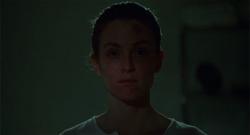
Safe
1995 -

Viy
1967 -
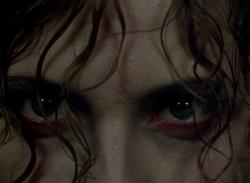
Black Narcissus
1947 -

Possession
1981 -

Carrie
1976 -

The Devils
1971 -

The Sea Serpent
1984 -
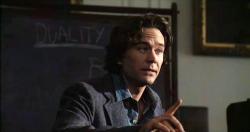
The Dark Half
1993 -
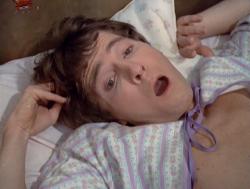
The Baby
1972 -
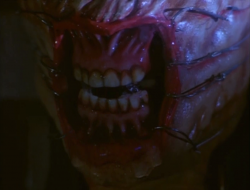
Hellraiser
1987 -

The White Reindeer
1952 -
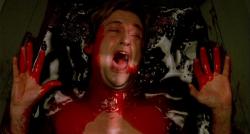
The Serpent and the Rainbow
1988 -
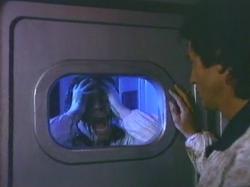
Endless Descent
1989 -

Prom Night
1980 -

Night Train Murders
1975 -

God Told Me To
1976 -
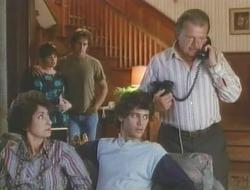
In a Child’s Name
1991 -
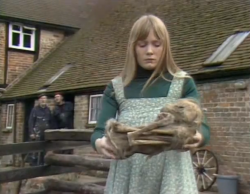
Beasts
1976 -

Prom Night II
1987 -
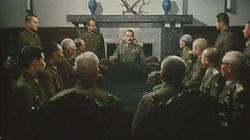
Men Behind the Sun
1986 -
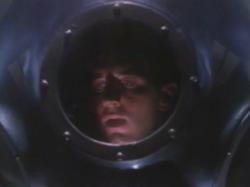
DeepStar Six
1989 -
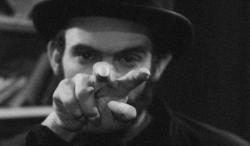
At Midnight I’ll Take Your Soul
1964 -

They Came Back
2004 -
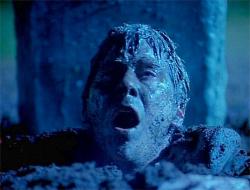
Buried Alive
1990 -
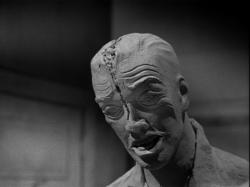
A Bucket of Blood
1959 -

Buffy the Vampire Slayer
1992 -

Night and Fog
1956 -

It Came From Beneath the Sea
1955 -
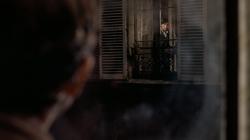
The Tenant
1976 -

Tokyo Gore Police
2008 -

The Rocky Horror Picture Show
1975
We don’t do comments anymore, but you may contact us here or find us on Twitter or Facebook.



